-
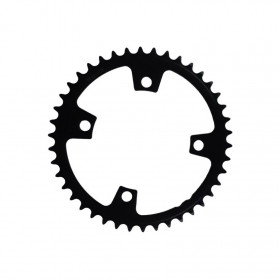 New product -34%Chainwheel FSA Powerbox ABS and SL-K ABS 10 or 11s
New product -34%Chainwheel FSA Powerbox ABS and SL-K ABS 10 or 11s- €49.49
- €74.99
-
 New product UsedChainring Specialites TA Zephyr 110 mm
New product UsedChainring Specialites TA Zephyr 110 mm- €34.99
-
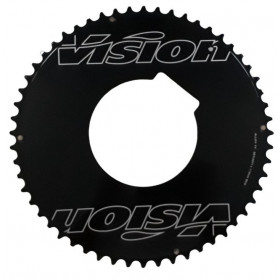 New product -40%Chainwheel 56 teeth Vision FSA Powerbox ABS and SL-K ABS 10 or 11s
New product -40%Chainwheel 56 teeth Vision FSA Powerbox ABS and SL-K ABS 10 or 11s- €74.99
- €124.99
-
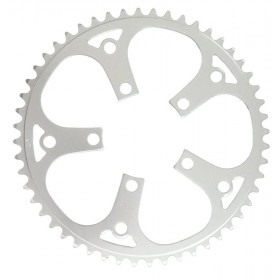 New product52 teeth chainwheel Stronglight 86 mm
New product52 teeth chainwheel Stronglight 86 mm- €19.99
-
 New product -47%Track bike chainring 52 teeth 144 mm TA Competition
New product -47%Track bike chainring 52 teeth 144 mm TA Competition- €28.08
- €52.99
-
 New product -25%Rotor noQ chainring 52 teeth 10-11 speed 110 mm
New product -25%Rotor noQ chainring 52 teeth 10-11 speed 110 mm- €67.49
- €89.99
-
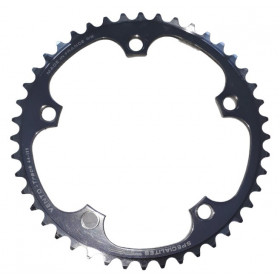 New product -47%Track bike chainring 44 teeth 135 mm TA Alize
New product -47%Track bike chainring 44 teeth 135 mm TA Alize- €21.19
- €39.99
-
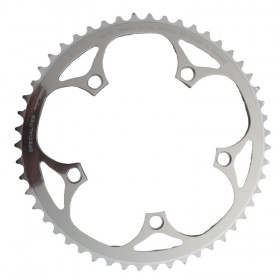 New product -47%Track bike chainring 52 teeth 130 mm TA Alize
New product -47%Track bike chainring 52 teeth 130 mm TA Alize- €28.08
- €52.99
-
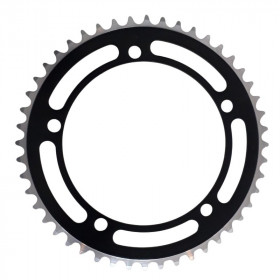 New productTrack chainring 144 mm 48 teeth
New productTrack chainring 144 mm 48 teeth- €14.99
-
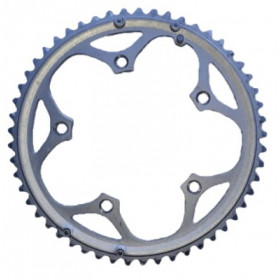 New productShimano chainring 53 teeth type A 9 speed 130 mm
New productShimano chainring 53 teeth type A 9 speed 130 mm- €14.90
-
 More detailsNew product Out-of-StockMiche pista advanced chainring 46 teeth 144 mm 1/2" x 1/8"
More detailsNew product Out-of-StockMiche pista advanced chainring 46 teeth 144 mm 1/2" x 1/8"- €44.99
Showing 1-11 of 11 item(s)
The fixie chainring is an essential part of power transmission from the fixie crankset on a fixed gear bike. Here is a description of its function and characteristics:
Function of a fixie chainring :
The fixie chainring is part of the bike's power transmission system. It is mounted on the crankset, also called the crank, and it is equipped with teeth that mesh with the chain. When the rider pedals, the chain transfers pedaling power from the chainring to the fixed sprocket at the rear of the wheel, propelling the bicycle forward.
Features of a fixie chainring :
1. Number of teeth:
Fixie bike chainrings come in a range of different tooth sizes, which directly influences gear ratio and pedaling difficulty. A chainring with fewer teeth will produce a lower gear, providing easier pedaling effort but less speed, while a chainring with more teeth will produce a higher gear, providing more speed but requiring more pedaling effort. important.
2. Material:
Fixie bike chainrings are typically made from lightweight, stiff materials, such as aluminum, steel, or carbon. The choice of material can influence the weight of the tray as well as its durability and resistance to wear.
3. Shape and design:
Fixie bike chainrings can have different shapes and designs to accommodate different pedaling styles and aesthetic preferences. Some chainrings have a classic round shape, while others may have an oval or elliptical shape to improve pedaling efficiency and reduce muscle fatigue.
4. Compatibility:
It is important to choose a fixie chainring that is compatible with the existing drivetrain system on the bike, including chain length and crankset type. Chainrings are available in different configurations to accommodate different types of cranksets and drivetrain setups.
5. Machining and finishing:
High quality chainrings can be precision machined to ensure precise engagement of the chain teeth and smooth operation of the drive system. Some models may also have special coatings to improve durability and resistance to wear.
In summary, the fixie chainring is a crucial component of the bike's power transmission, directly influencing the gear ratio and pedaling performance. Available in a variety of sizes, materials and designs, it allows riders to personalize their pedaling experience based on their individual needs and preferences.
